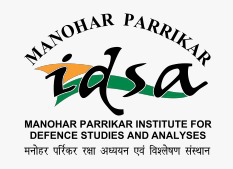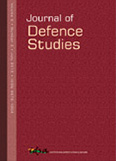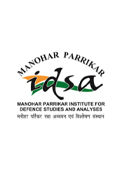Furthering ‘No First Use’ in India-Pakistan Context
Pakistan has not subscribed to No First Use. That it could do so has been expressed informally by its President Zardari. India could take up the issue with Pakistan at a forum discussing Confidence Building Measures as and when the composite dialogue resumes. The Lahore Memorandum of Understanding posits such consultations. To get Pakistan on board, India may require initiating a strategic dialogue with Pakistan, outside of the existing composite dialogue framework. This would build trust that could impact other areas of the peace process positively.
The central debate in India’s civil military relations
Critics have it that the last bout of reforms in India’s defence sector in the wake of Kargil has not been taken to its logical conclusion. There are two key areas over which there is considerable debate. One is the continuing absence of a Chief of Defence Staff, and the second is the cosmetic integration between the Ministry of Defence and the Service Headquarters. It is asserted that the latter is the result of bureaucrats protecting their turf in a perverse interpretation of civil control.
Seizing the moment: India and the ‘moderate Taliban’
The Taliban is doubtless a menace and requires to be combated. Towards this end the Global War on Terror, recently rechristened ‘Overseas Contingency Operations’, has been underway for the better part of this decade. The Taliban, however, only appears to be growing in strength and in the spread of its reach. Therefore, the Obama administration is simultaneously pursuing a policy of reaching out to the ‘moderate’ Taliban. It hopes to whittle down the Taliban, permitting an early exit of the US from the region.
Reviewing India’s Nuclear Doctrine
There is a case for terminating any nuclear exchange at the lowest level possible and the nuclear doctrine needs to reflect this. A review of the doctrine a decade after it was first expounded is in order.
Exit Points and the Updation of Cold Start Doctrine
The Army Commander’s conference is a much looked forward to biannual feature in the strategic calendar. The occasion, and like conferences in the other two services, is used by the forces, among other things, to sensitise the nation as to their preparedness and important decisions taken and measures underway. In April 2004, a major initiative of the Army was communicated, that of adoption by the Army of the Cold Start doctrine.
Initiatives to transform the Army Officer Corps
The defence forces have prided themselves in their consistent engagement with the frontiers of their profession. This is an index of their professionalism. India’s military, in particular, is rated highest on the key index of being apolitical against any peer military in the developing world. Owing to high economic growth, the military, through expanding defence budgets since the turn of the century, is also being ‘RMA enabled’. Defence cooperation with other professional militaries such as the US military and service in UN peacekeeping operations is expanding its repertoire of skills.
Foregrounding ‘Non-Combatant Immunity’
A fundamental principle of humanitarian law, non-combatant immunity, has been virtually consigned to history during the Bush years. To a large extent this can be considered a ‘success’ for terrorists. That terrorists do not respect the principle of non-combatant immunity is central to the definition of terrorism. The aim of terrorists is substantially achieved when states also adopt their language and grammar. This has been done to an extent by the US in its militarily aggressive response to 9/11 in Iraq and Afghanistan.
The Post 26/11 Regional Strategic Predicament
Evidence gathered in the aftermath of by far the most deadly terrorist attack in Mumbai indicates conclusively that the attack was planned by the Pakistan based Lashkar-e-Toiba. The attack on Mumbai was executed by a well trained and indoctrinated suicide squad comprising of ten Pakistani terrorists. This testifies to the long gestation planning and preparation that can only have been made possible by the resources of a well established terrorist organization. The recruitment was from Punjab, training was in Pakistan-occupied Kashmir, and maritime training was conducted in Karachi.
Indian Army: Vision 2020
Kanwal, G., Indian Army: Vision 2020, New Delhi, Harper Collins, 2008, pp. 342, Rs. 495/-, ISBN 13: 978-81-7223-732-5
The Need For Clarity In India’s Nuclear Doctrine
While the Draft Nuclear Doctrine of August 1999 was an elaborate document, the press release of the Cabinet Committee on Security on India’s operationalisation of its nuclear doctrine of January 4, 2003 was, on the other hand, very succinct.







